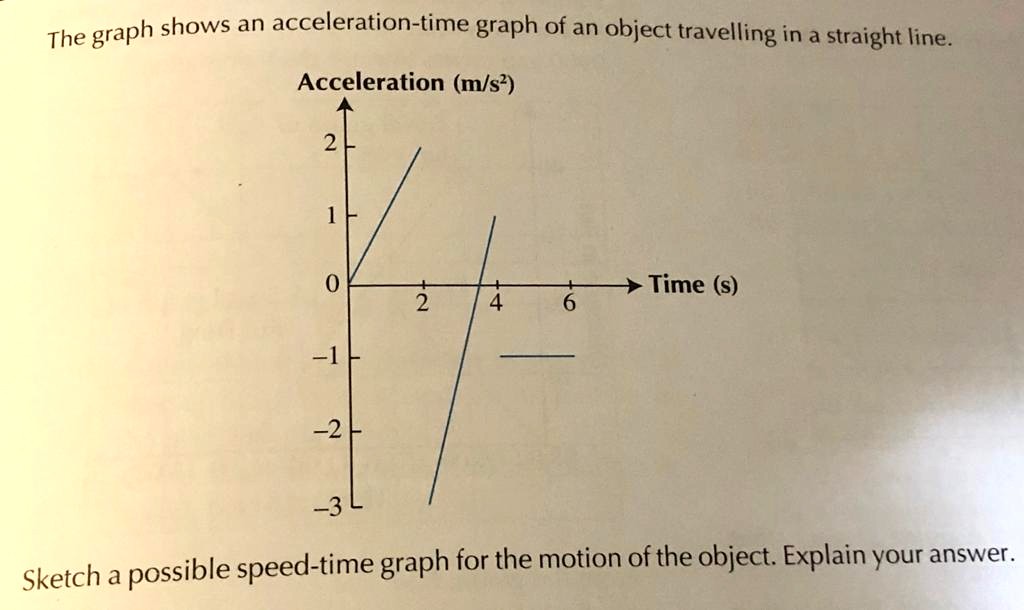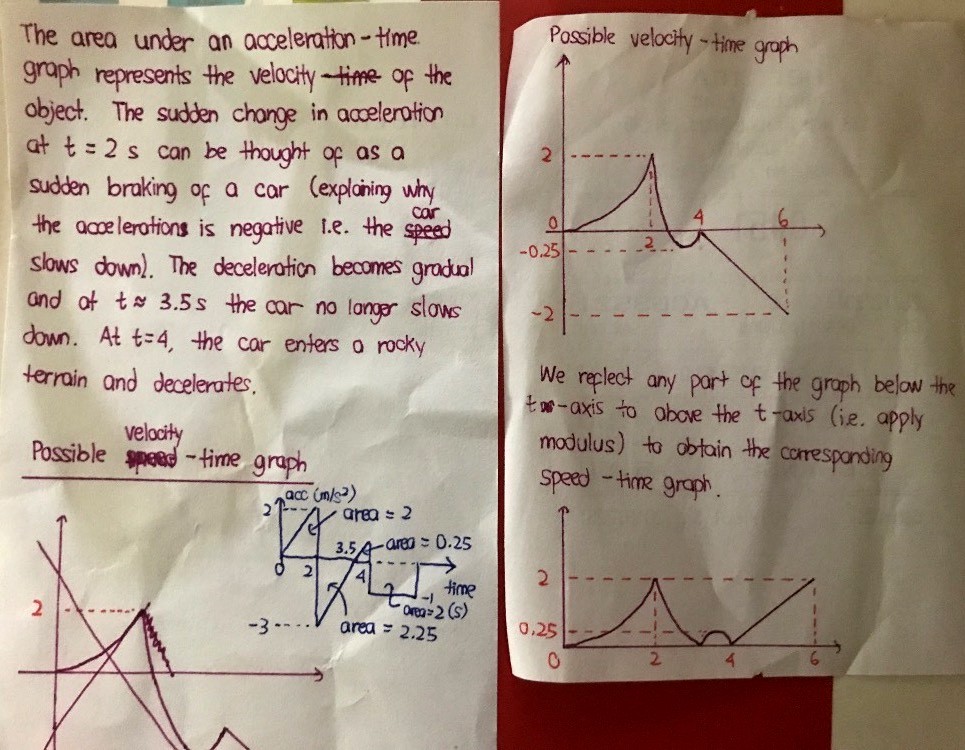Ask Singapore Homework?
Upload a photo of a Singapore homework and someone will email you the solution for free.

Question
secondary 3 | E Maths
One Answer Below
Anyone can contribute an answer, even non-tutors.

I am unable to explain this question :( Pls help. Thanks.
The sudden change in the direction of the hall explains the discontinuity.
I believe that there is no physical phenomena which can describe this motion.
Will draw the graph later.
See 1 Answer
Yes, I might have to trouble you to explain more if I don't understand. Thanks again :)
Qn#1: Why is the acceleration when the car brakes negative? (If your analogy is applied here)
Qn#2: Does the direction in which the car is slowing down in matter since acceleration is a vector quantity?
Qn#3: How do you determine which part of the downward curve is in the positive or negative terrains of the velocity-time graph?
Qn#4: Why is the velocity at t=3.5 negative?
1. As a car brakes, it experiences a sudden slowing down from a certain speed. When this happens, it takes only a matter of moments (0.1 seconds) before the speed decreases by a lot. This goes for a very short duration before the vehicle finally reaches a desired speed (zero or just a slowing down). As such, there is deceleration involved due to a decrease in speed, which would become more gradual as the car slows down to the desired speed. A car would be a good example here as the deceleration is sudden.
2. Technically yes, although most of the time a car moves and decelerates in a single direction. A car would not be moving forward and suddenly find itself moving in the other direction. So the acceleration time graph is often well defined.
3. The area under the acceleration-time graph provides a numerical value for the velocity (not speed) of the car.
In the first two seconds, the car’s acceleration increases constantly from 0 m/s2 to 2 m/s2. The speed would increase in the manner I have drawn, up to a speed of 2 m/s which is the area of this triangle. Hence, at the 2 s mark the speed is 2 m/s.
A sudden deceleration defined by an area of 2.25 units (1/2 * 1.5 * 3) reduces the velocity by 2.25 m/s2 to a current value of -0.25 m/s at 3.5 s. At this point, the car does move backward (but in this case the car would be a bad example, as braking actions will not cause the car to move backwards).
The car then has a positive acceleration defined by a total area of 0.25 units over the next 0.5 seconds (1/2 * 0.5 * 1), bringing up the velocity to a perfect zero. Finally, the car’s velocity reduces by 2 m/s to a value of -2 m/s at 6 s.
In general, areas above the graph will be counted as positive, while areas under a graph will be counted as negative. They cancel each other out. You will see this in very great detail in Sec 4 A Maths under integration, where they also cover kinematics for non-linear motions.
4. The decrease from 2 m/s to -0.25 m/s from 2 s to 3.5 s makes the new velocity negative, as explained above. It just simply depends on whether an area below the t-axis is greater than the area above the t-axis or not.
Let me know if you are confused my my explanations and I will try and refine them again.




